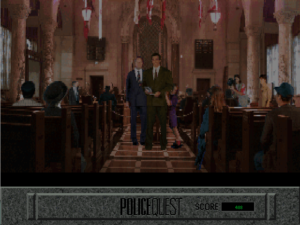Final Fantasy VI: Now where were we?
It’s been over a year since my last session of FF6. I’ve spent a little while rereading my previous posts to remind myself of what was going on, so here’s a brief recap: Kefka destroyed the world. Characters in the game say as much. He continues to destroy it from time to time, clobbering towns with his destructo-beam for giggles from atop his unassailable mile-high tower, but the indomitable survivors continue to rebuild. Likewise, the player is rebuilding the party. You start with only Celes, who was once an imperial general, but whose main role in the story is that of girl. Before my hiatus, I had found Sabin, martial artist with his own special martial-arts-move interface, and I was stalking someone who looked exactly like Edgar, gadgeteer king, but who claimed not to be him. And by the end of my latest session, I had added Edgar to my party, as well as Setzer, shady gambler with his own airship. That airship was destroyed during the apocalypse, but once he was convinced to rejoin the old gang and topple the tower — something best attempted from the sky — he unveiled a replacement, called the Falcon, just in case you hadn’t caught on about the Han Solo wannabe thing yet.
Now, I hadn’t planned to take so long to get back to this game, but it seems to me that if there’s one spot in the game that’s ideal for an extended break, it’s here at the beginning of the second half. You get the player characters and their abilities introduced afresh, one by one, and until you get the airship, your choices about where to go are constrained, making it less important that you don’t remember what you were doing. My one regret is that I didn’t cut things off soon enough to get the full effect. If I had started this session with Celes still stuck alone on her island, I’d have essentially no immediate context to try to remember. As it is, I started off between a cave and a town, and didn’t remember which one I was headed towards and which I had just left — or, indeed, if I needed to go somewhere else entirely. I wound up wasting some time wandering around in a desert having random encounters. But I suppose I needed that time to refamiliarize myself with the combat mechanics, and, in particular, to relearn Sabin’s special moves (or at least the few worth using).
Still, I have to say that getting back into this game has been a joy, especially in comparison to the other games I’ve been playing lately. It definitely has by far the greatest sense of professionalism of everything I’ve hit so far in this year’s chronological rundown — in contrast to everything else, it doesn’t feel at all rushed or ill-conceived or technology primitive. Was 1994 some kind of turning point for the industry? Perhaps it’s the difference between console and PC games? Or maybe it’s just that I’m playing the 1999 Playstation remake instead of the original SNES version, which definitely has an impact on the UI, if nothing else.
 Comments(6)
Comments(6)